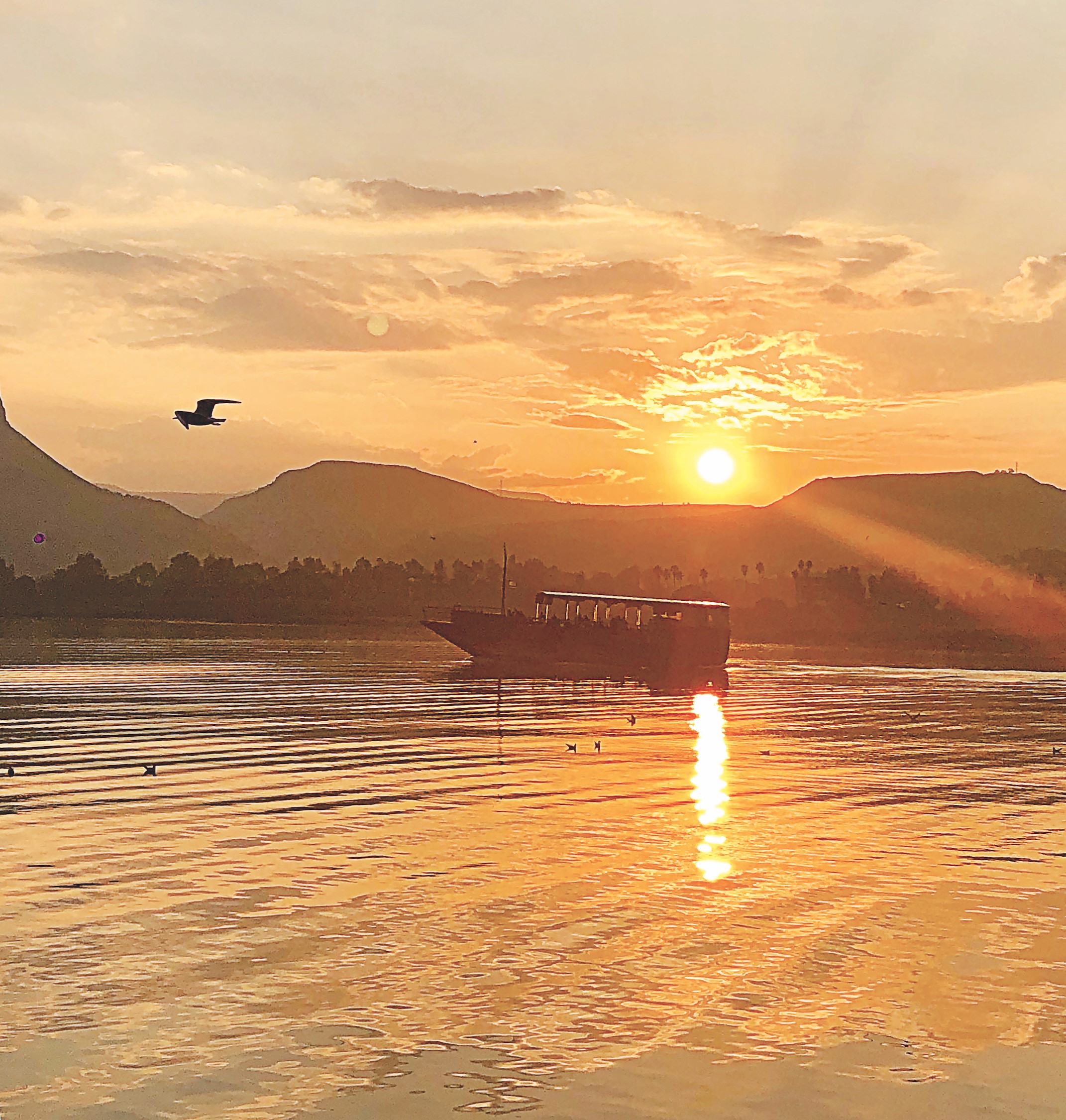
Being part of a pilgrimage to the Holy Land gives depth even to the sightseeing. You witness, not just see, the significance of all the photogenic sites — you are retracing the life of Jesus Christ, in the very land He walked on. PeopleAsia editor-in-chief JOANNE RAE RAMIREZ visits the Holy Land before the Lenten Season and walks down the road where faith, facts, memories and miracles intertwine.
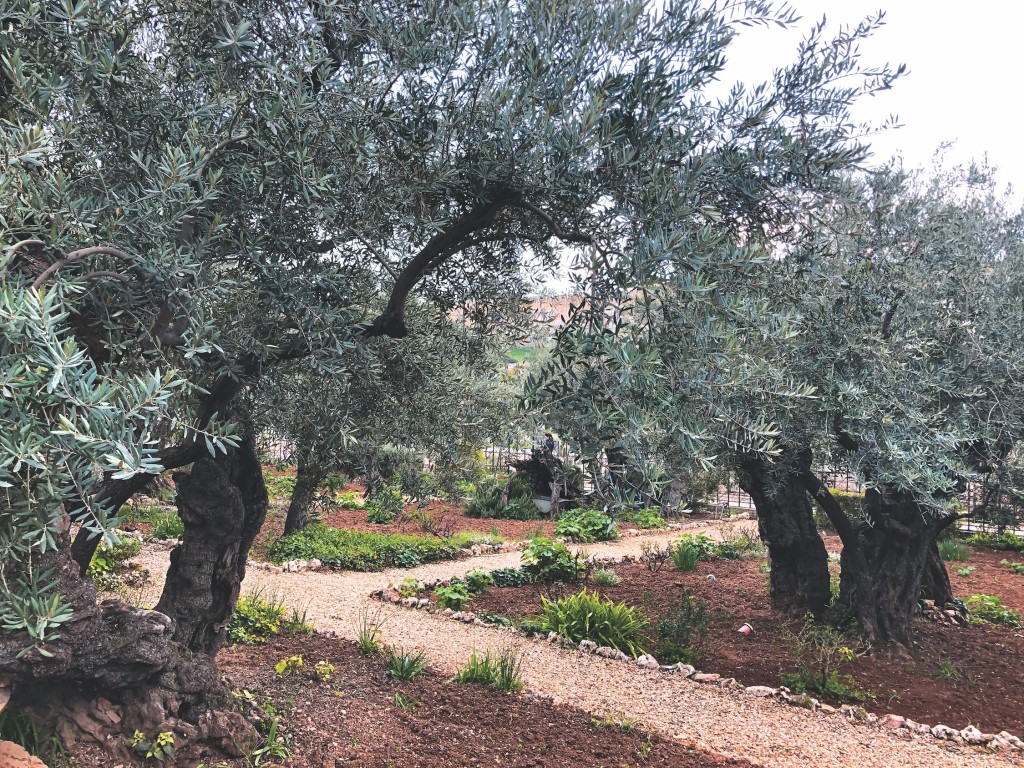
There is only one place on earth where Jesus Christ, upon whom is anchored the faith of the world’s over two billion Christians, walked on, and lived as flesh and blood — Israel and nearby places like Jordan collectively known as the “Holy Land.” To have been able to retrace Jesus’ Christ’s footsteps 2,000 years after He was born, is spiritual rejuvenation. A faith lift.

It isn’t unlike a day in a spa, except that it gives joy, not pleasure. It blends faith with facts, for one is able to validate accounts of life over two millennia ago, in the very setting it unfolded.
The pilgrimage to the Holy Land was organized by Catholic Travel Inc., which sets aside part of its earnings from pilgrimages for the upkeep and hospitalization of abandoned and sick priests.
Our group of 49 was headed by Fr. Dave Concepcion, who told us even before our journey to expect “the unimaginable.”
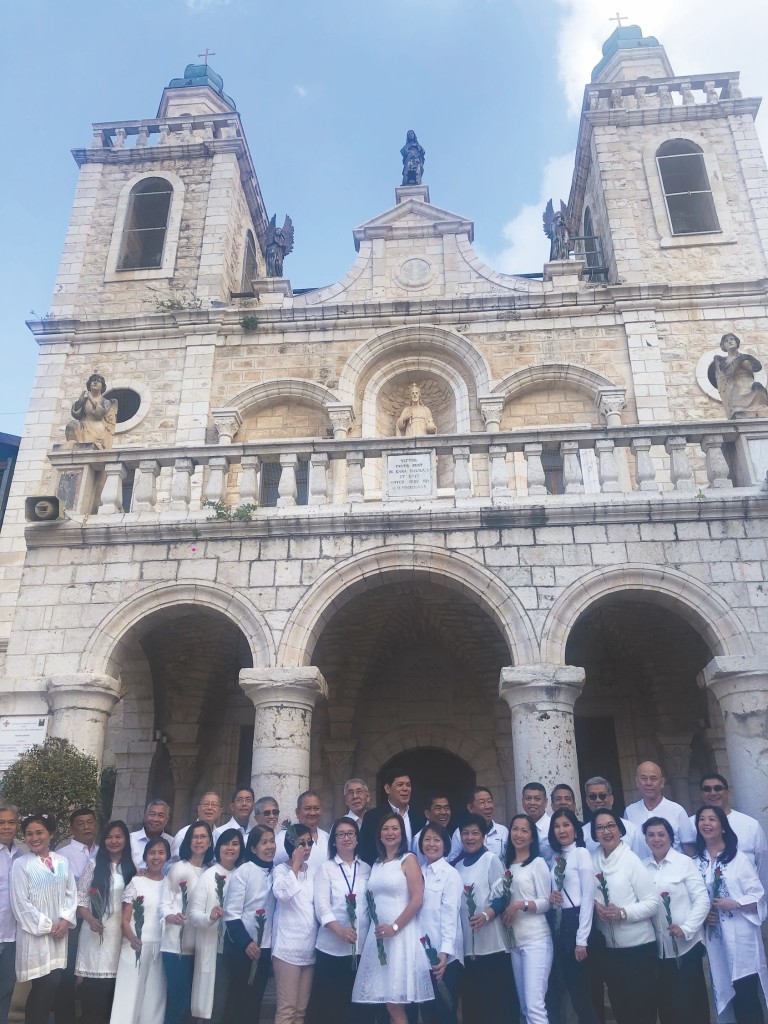
Our sojourn began in Nazareth. It was in this hilly city where orange trees line cobblestoned roads, and houses stand on limestone terraces, that the “yes” that changed the world was uttered over 2,000 years ago. It was a soft yes that has been written in stone through two millennia.
“The story of mankind would have been different,” said Fr. Dave, “if Mary said ‘no’.”
The Basilica of the Annunciation is the focal point of Nazareth, where Jesus spent his childhood. The present church is the fifth to be built on the spot where the Angel Gabriel is believed to have appeared before Mary to announce the birth of Jesus. Remains of the first church were discovered during excavations in 1955.

The grotto, where the Angel Gabriel is believed to have appeared to Mary, was carved out of the white rock of the hill and is considered the holiest spot in the church.
Opposite the Church of the Annunciation is the Church of St. Joseph, built over the cave that served as the carpentry workshop of Joseph. It is also believed that the cave was the home of Joseph, Mary and Jesus. Parts of the cave dwellings of Joseph and Mary still stand, mute witnesses to the life of the boy Jesus.
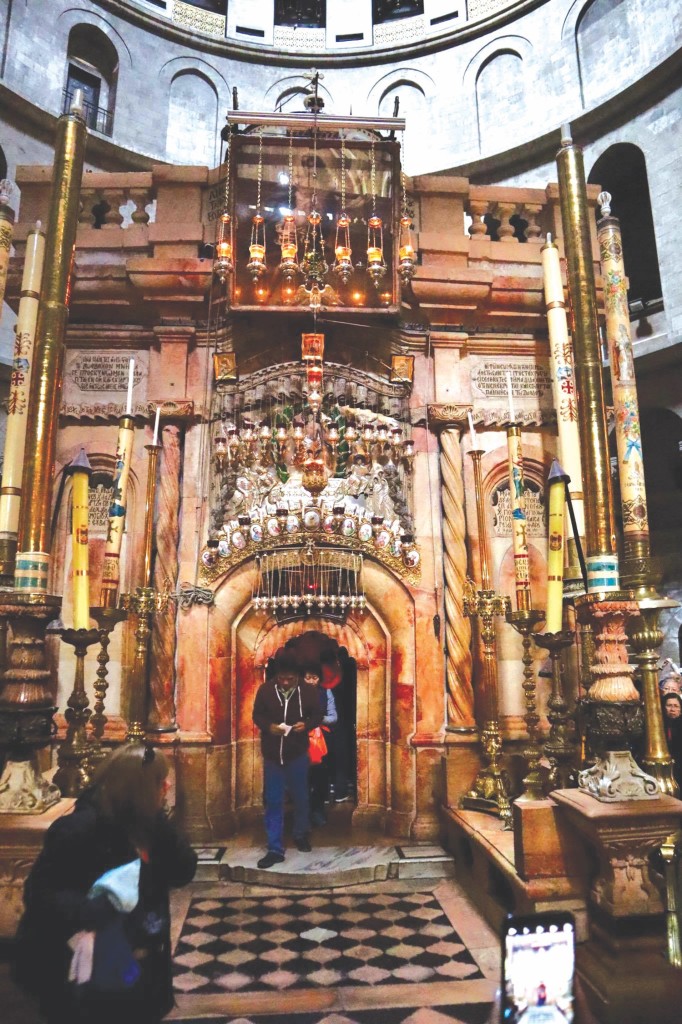
in Christianity /Photo by Ferdie Castillo
Near Nazareth is Cana, where Jesus performed his first miracle at a wedding. According to the Bible, the wine ran out in a wedding party where Mary was a guest, and she asked her now adult son for, well, help.
Lo and behold! Six huge stone jars were filled with water and Jesus turned it into wine.
In Cana, all 17 married couples in our group renewed their wedding vows in a touching ceremony within the Mass. As they did so, one of our fellow pilgrims, Adele Joaquin, played the flute to the tune of “Panunumpa.”
We also visited Bethlehem, where Jesus was believed to have been born. In Hebrew, Bethlehem means “House of Bread,” and the spot where Jesus was born is marked by a star inside the Basilica of the Nativity.
The star is not on the main altar, but inside a cavernous basement that is known as the “chapel of the manger.” Beneath an altar near the tiny chapel is a silver star that marks the spot where Christ was born. The emotion inside this tiny chapel is virtually palpable, I kid thee not. One of the members of our group, Romy Limuaco, broke down in tears as he was reading a passage from the Bible on Christ’s birth, a meter away from where it actually took place.
“Manger Square,” the sprawling stone square in front of the Basilica is all alit at night, and is the focal point of Christmas celebrations in Bethlehem. Actually, every night feels like Christmas Eve on Manger Square, which is always bedecked in light.
Trip to Jerusalem
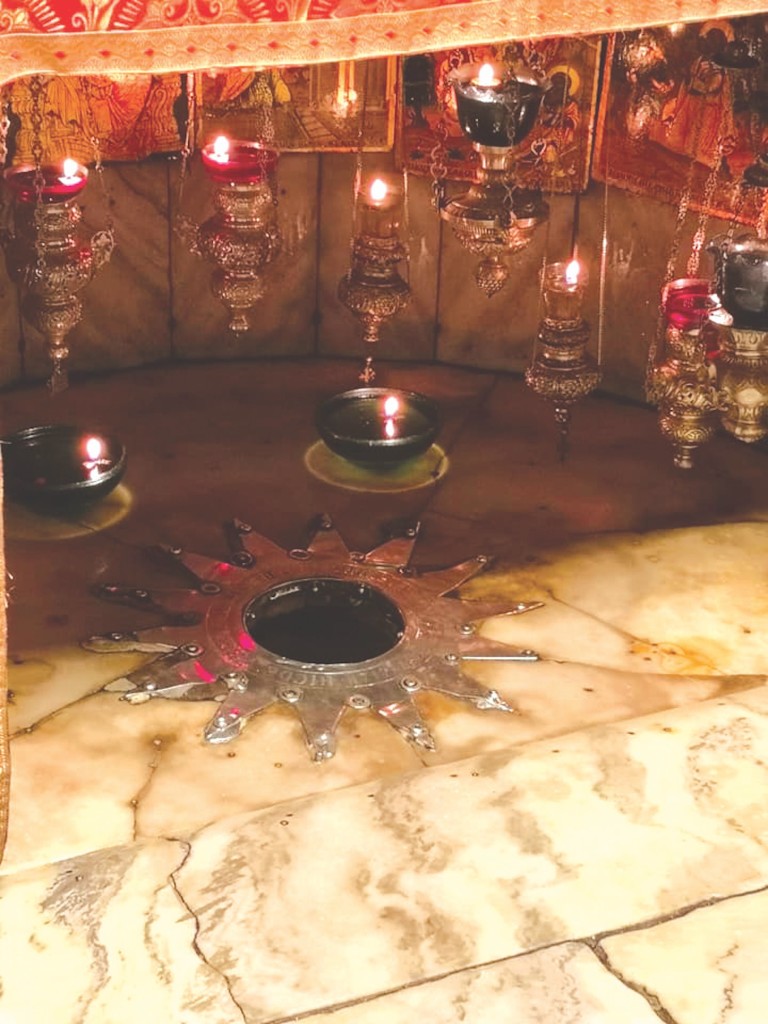
The highlight of the pilgrimage was our trip to Jerusalem, the place of Christ’s passion, crucifixion and resurrection, the holiest place in Christendom. Aside from being the city where Christ was crucified, a sacrifice that Christians believe redeemed mankind, Jerusalem is also the seat of two other major faiths, Judaism and Islam.
The Stations of the Cross (marked by Roman Catholics) leading up to Calvary are part of a maze in a market. Some are marked by chapels, while one — the fourth station — is a restaurant.
But retracing Christ’s steps on the stone roads he once walked, even in a marketplace, stirs the soul. You can imagine the unimaginable. Including the pain
The 12th Station, where Jesus is believed to have died on the cross, is now a Greek Orthodox chapel inside the Church of the Holy Sepulchre. The altar has a silver disk beneath it, marking the exact spot where the cross stood. Through a hole in its center — big enough for only a fist — one can touch the rock of Golgotha or Calvary, where Christ was crucified.
The 13th station is where a huge slab of marble known as the “Stone of Unction” lies. It is where Jesus’ lifeless body was laid on after He was taken down from the cross and anointed with a mixture of myrrh, aloe and aromatic oils. The slab is still fragrant to this day.
Jesus’ tomb, the holiest place in Christendom, lies in the center of the Church of the Holy Sepulchre (which means tomb or burial chamber). Our able Israeli guide Alliv Naej or “Arlette” advised us to queue up early for this visit — a spiritual privilege — and I’m glad we did so. (We queued up for less than an hour, which is considered short).
The sepulchre lies under a rotunda in an ornate edicule or small shrine. Before you reach Christ’s tomb, you will pass by a piece of the stone from the slab that sealed the cave, hewn from a rock, where Christ was laid to rest. The rotunda was built over this cave.
Today, the sacred rock is covered in thick marble, over which pilgrims are allowed to lay their hands and their rosaries and crucifixes. Tears fall unbidden when one is before the Holy Sepulchre, which simply stuns. The language to the faithful is personal, and all pilgrims have an unforgettable story to tell after visiting Christ’s tomb, which is actually the 14th Station of the Cross.
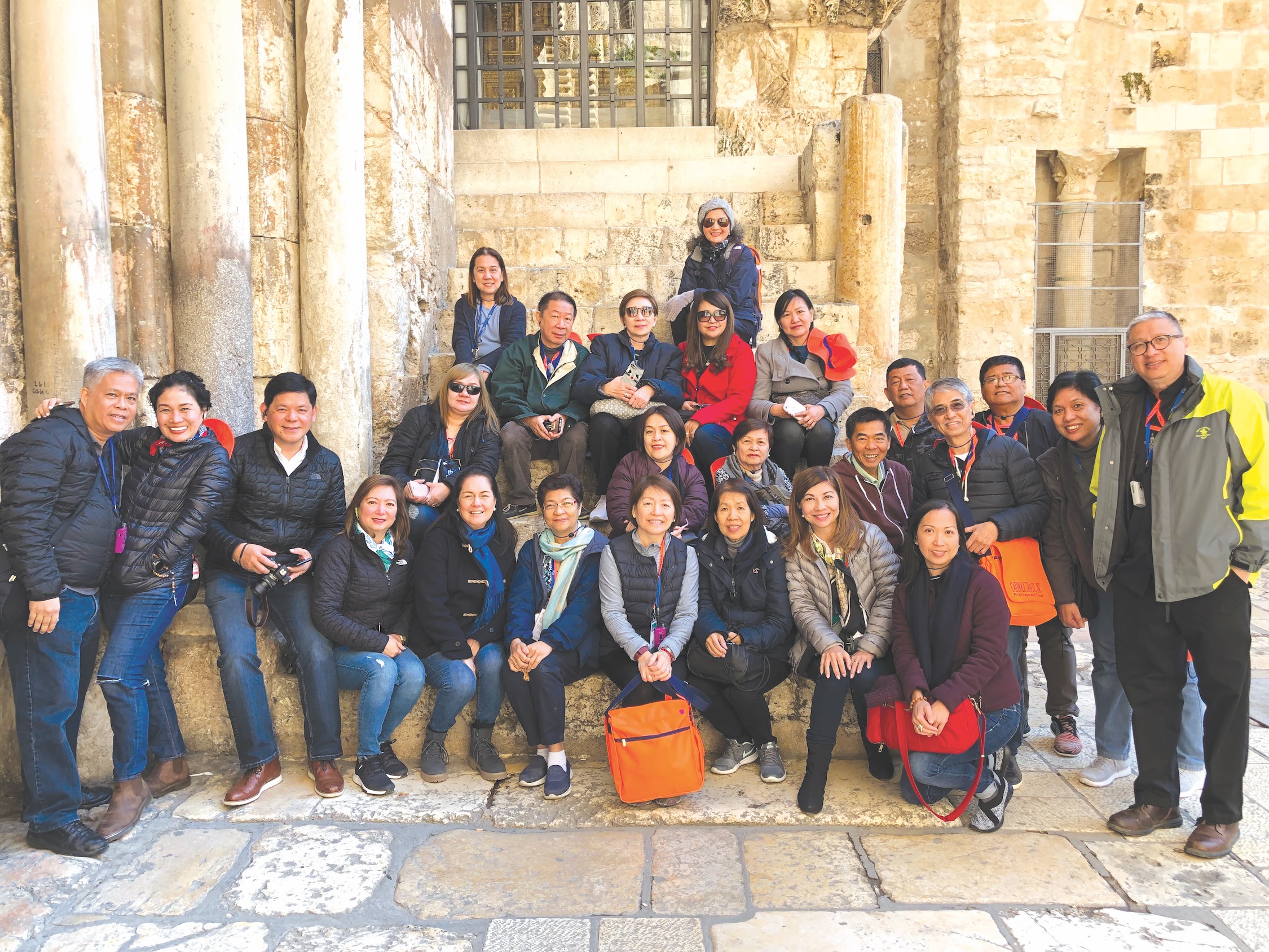
Being part of a pilgrimage to the Holy Land gives a depth even to the sightseeing. It breathes life to history. You witness, not just see, the significance of all the photogenic sites — you are retracing the life of Jesus Christ, in the very land He walked on.





